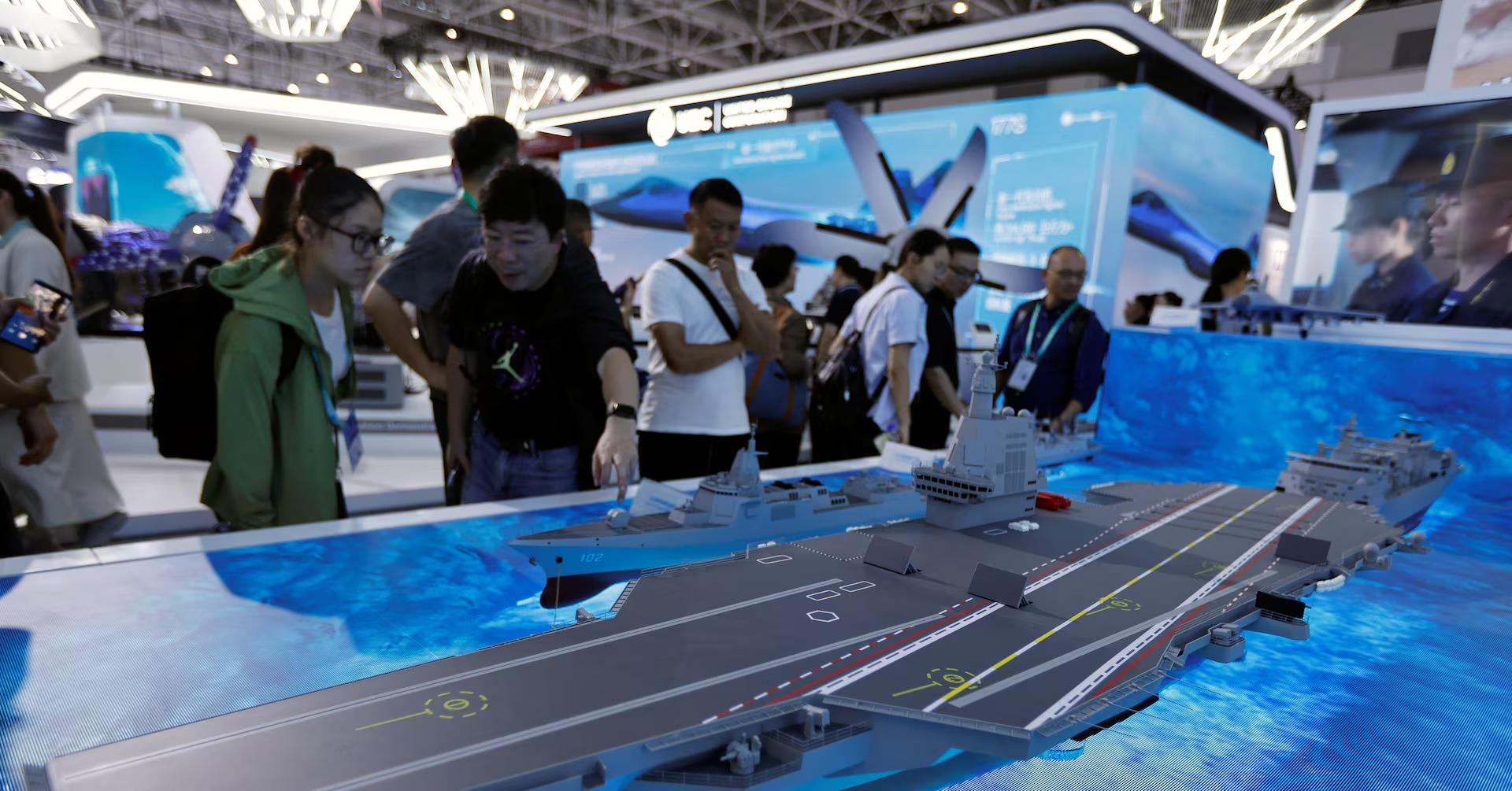Fujian China’s first indigenously designed carrierCan launch advanced aircraft with more weaponsAnalysts say more work needed to make it fully operational
HONG KONG, Nov 7 (Reuters) – The commissioning of China’s latest aircraft carrier this week marks a new chapter in its military modernisation effort but security analysts and regional diplomats say tough challenges lie ahead before it can be made fully operational.
President Xi Jinping attended the commissioning and flag-presenting ceremony of the Fujian in Hainan province on Wednesday, and boarded the vessel for an inspection tour, the official Xinhua news agency reported on Friday.
Sign up here.
The Fujian is China’s third aircraft carrier, with a flat flight deck and electromagnetic catapults for take-offs that make it a potentially far more powerful naval weapon than China’s first two Russian-designed carriers.
The Fujian will be able to carry significantly more and heavier-armed jet fighters than the Liaoning and Shandong carriers, which are smaller and rely on ramps to launch aircraft.
In sea trials ahead of the commissioning, the Chinese navy launched its new carrier version of the J-35 stealth fighter and an early-warning aircraft, the KJ-600, as well as a variant of its established J-15 fighter.
Chinese defence officials and state media have in recent weeks been hailing the prospect of the Fujian as a “milestone”.
The carrier’s crew stood in formation on the deck to bid farewell to Xi on Wednesday, chanting “obey the (Communist) Party’s command, be able to fight and win, maintain exemplary conduct”, state media reported.
Regional military attaches and analysts say they will be watching upcoming deployments, trying to gauge how quickly the Fujian is able to become combat ready by monitoring flight operations and efforts to combine its operations with support ships and submarines.
“I think it will be at least another year before it reaches full operational capability,” said Ben Lewis, founder of open source data platform PLATracker.
“Despite nine sea trials this year, they are working with almost entirely new platforms top to bottom,” Lewis said ahead of Friday’s announcement.
Singapore-based defence scholar Collin Koh said recent official footage revealed the J-15s were taking off on the catapults unarmed, suggesting the operations were in early test mode.
The deployment of the KJ-600 is also significant, helping China to knit together the complex jigsaw of carrier operations and extending its range from its near seas.
CHINESE CARRIERS HAVE BEEN CAUTIOUS, SO FAR
Since the commissioning of the Liaoning in 2012, the Chinese navy has been relatively cautious in deploying the carriers, essentially keeping them as test-beds.
They have started venturing east of Japan and out towards Guam, home to large U.S. bases, and some analysts expect gradually more ambitious deployments from the Fujian and future carriers.
Diesel-fuelled, the Fujian lacks the range of U.S. nuclear-powered carriers, which can operate for years without needing to refuel, sustaining extensive blue-water operations.
Some analysts estimate the Fujian would need re-fuelling, either by ships or in port, after 10,000 nautical miles (18,520 km).
The Pentagon’s annual report on China’s military modernisation, released last December, noted that the Fujian and future similar carriers would boost China’s ability to project military power, in part through deploying highly specialised electronic warfare and anti-submarine aircraft.
“This will increase the striking power of a potential People’s Liberation Army Navy carrier battle group when deployed to areas beyond (China’s) immediate periphery” it said.
Koh said the Fujian was likely to play a key domestic propaganda role and he said he also expected the Chinese navy to deploy its exercises around Taiwan – even if its role in Taiwan conflict scenarios is up for debate.
“This is potentially a game changer for China but there are a lot of capabilities here they’ve still got to test and finesse – and that includes quite how they would best deploy it in a Taiwan conflict,” said Koh, of Singapore’s S. Rajaratnam School of International Studies.
Reporting by Greg Torode; Additional reporting by Beijing newsroom and Laurie Chen, Editing by Jacqueline Wong and Raju Gopalakrishnan
Our Standards: The Thomson Reuters Trust Principles., opens new tab

